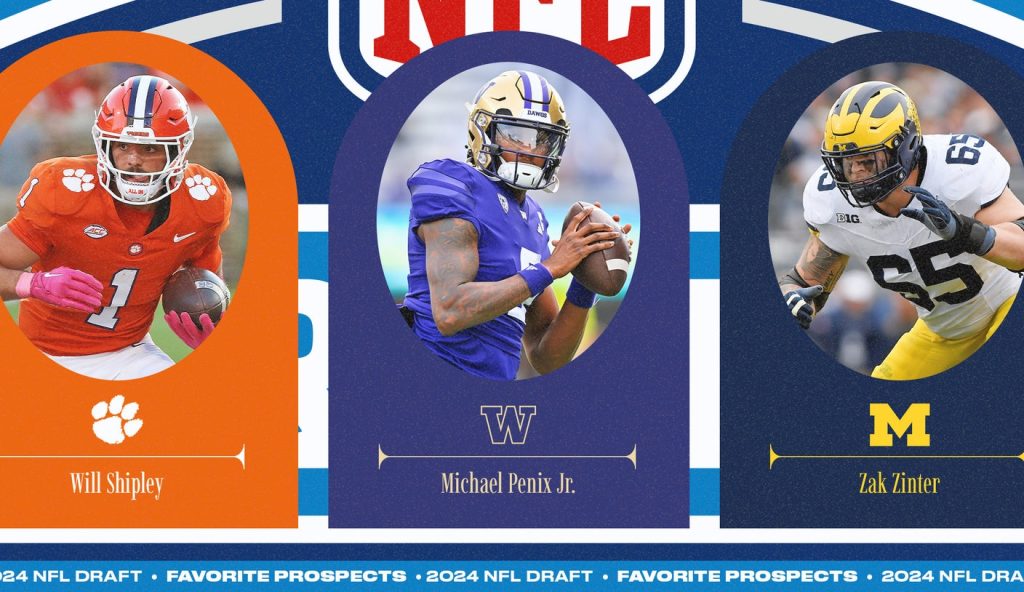During the pre-draft process, scouts evaluate hundreds of prospects, but a handful become their favorites, known as “pet cats.” These players may not be high-profile prospects, but they possess qualities that will help them succeed at the next level. In the 2024 NFL Draft class, a few “pet cats” have emerged as favorites. Among them is quarterback Michael Penix, Jr. from Washington, known for his deep ball accuracy and playmaking ability in a vertical passing game. Penix’s success in a quick-rhythm offense with NFL-caliber playmakers has showcased his talent, potential, and ability to excel in the right system.
Running back Will Shipley from Clemson is another standout “pet cat.” Shipley possesses a versatile skill set as a runner and receiver, with exceptional speed, quickness, and vision on the field. His track and lacrosse background has contributed to his agility and elusiveness, making him a dangerous threat in open space. Shipley’s ability to impact games in multiple ways positions him as a potential game-changing playmaker at the next level.
At wide receiver, Ricky Pearsall from Florida stands out as a top “pet cat.” Pearsall, a slot receiver, has impressed with his route-running ability, ball skills, and versatility in the passing game. His knack for finding openings against zone coverage and his reliability in crucial moments make him a potential impact player in the NFL. Pearsall’s skills extend to special teams, where he excels as a punt returner, adding to his value as a dynamic playmaker.
Ja’Tavion Sanders from Texas is a standout “pet cat” at tight end, known for his pass-catching ability and versatility in a pass-heavy offensive system. Sanders’ athleticism and route-running skills allow him to create mismatches against defenders, particularly in the middle of the field. His experience as a starter at Texas has honed his skills, making him a potential impact player in the NFL who could outperform his draft status.
On the offensive line, Zak Zinter from Michigan is a notable “pet cat” known for his toughness, size, and aggression at the point of attack. Zinter’s physical style of play and ability to open running lanes make him a valuable asset in a run-heavy scheme. Despite some limitations in pass protection, Zinter’s awareness and tenacity should allow him to excel in the right system that emphasizes his strengths as an interior blocker.
Defensively, Mohamed Kamara from Colorado State is a standout “pet cat” known for his pass-rushing skills and disruptive presence on the edge. With impressive sack production and a variety of effective moves, Kamara poses a threat to quarterbacks and offensive linemen alike. His ability to create splash plays makes him an attractive prospect for teams in need of a dynamic pass rusher. In the linebacker position, Payton Wilson from N.C. State stands out as a top “pet cat” with exceptional athleticism, instincts, and playmaking ability. Wilson’s versatility as a run defender and pass rusher, combined with his speed and agility, make him a disruptive force on the field. If he can stay healthy, Wilson has the potential to make a significant impact early in his NFL career.
In the secondary, Mike Sainristil from Michigan is a standout “pet cat” at defensive back. As a former receiver turned cornerback, Sainristil brings a unique skill set and playmaking ability to the position. His coverage skills, tackling ability, and versatility as a pass rusher make him a valuable asset in the secondary. Sainristil’s experience and adaptability as a slot defender position him as a promising prospect with the potential to excel at the next level. Overall, these “pet cats” represent a group of underrated prospects with the talent, skill, and potential to succeed in the NFL and make an impact on their respective teams.


